Activities¶
Canvas¶
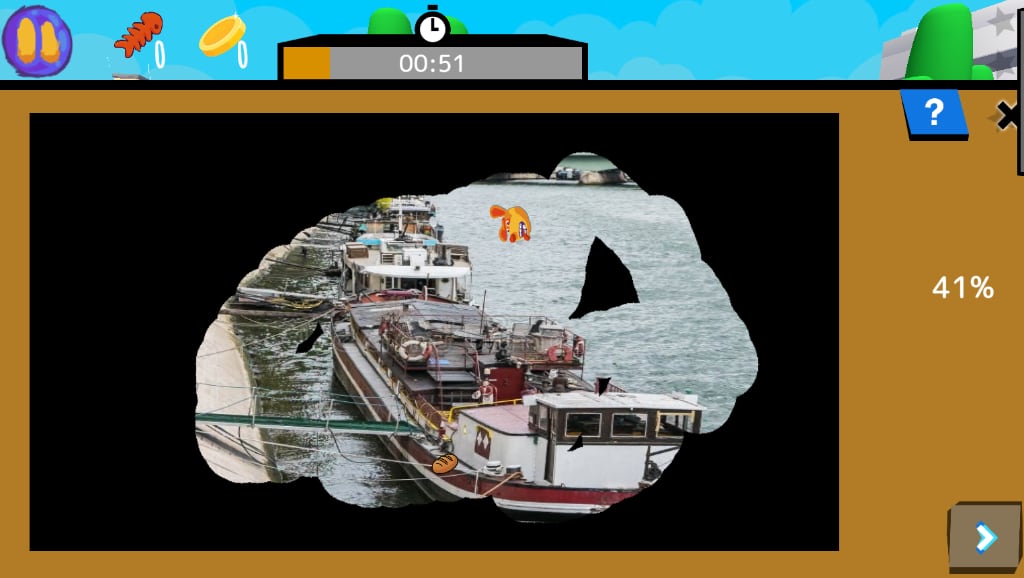 Clean all the surface
Clean all the surface
Categories:
- Coordination: Control precise movements and timing.
- Observation: Notice details and patterns in images or scenes.
- Attention: Focus on relevant information and ignore distractions.
Skills:
- Timing and coordination: Press
- Fine motor control: Make precise small movements with hands and fingers.
- Divided attention: Handle two or more tasks or sources at once.
- Visual discrimination: Spot small differences and match similar images.
A 2D minigame where the player is tasked with dragging a finger across the screen to clean a canvas. There will be obstacles scattered around the screen, moving between two points at varying speeds depending on the difficulty. If the player touches at least 1 of them, a point will be deducted once the minigame is finished (the amount of points deducted does not increase as the player makes more mistakes). A point will also be deducted upon skipping the minigame. There may be treasures hidden under the line: when the player traces over them, they are revealed and glow a little. The player can pick them up by tapping them. Input Variable: Background image and the images of the moving obstacles
Credits: - Valeria Passarella (Italy) - Stefano Cecere (Italy)
Jigsaw Puzzle¶
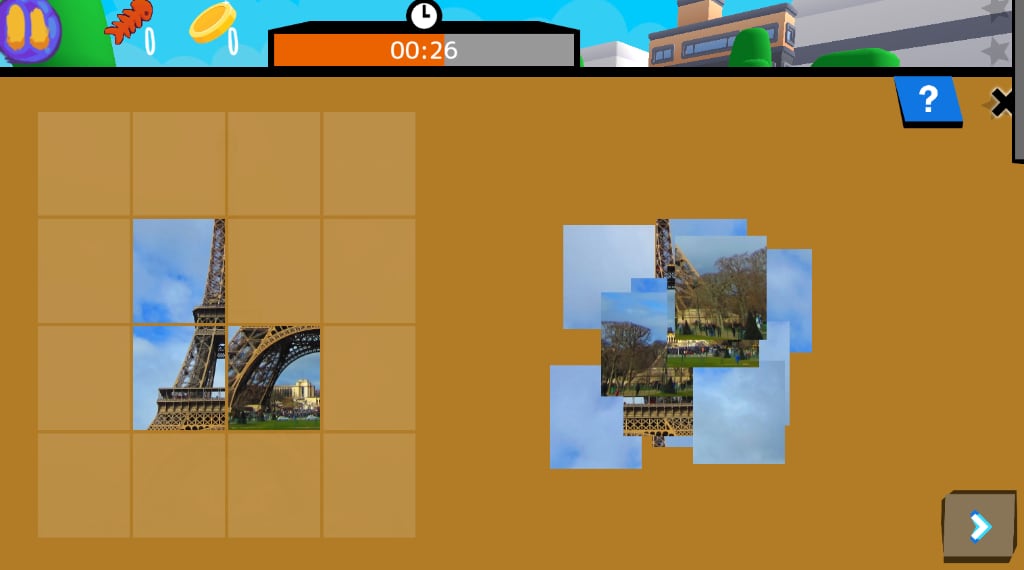 Put the pieces back in place
Put the pieces back in place
Categories:
- Problem Solving: Analyze situations and find effective solutions.
- Observation: Notice details and patterns in images or scenes.
Skills:
- Spatial reasoning: Mentally rotate
- Visualization: Imagine objects and actions in your mind’s eye.
- Visual discrimination: Spot small differences and match similar images.
- Planning: Choose steps and order to reach a goal.
Goal: Remember pictures better by interacting with them and not just looking at them gameplay: Reconstructing an image based on parts of it Moving objects with your cursor / mouse Input Variable: image
Credits: - Vieri Toti (Italy) - Stefano Cecere (Italy)
Match¶
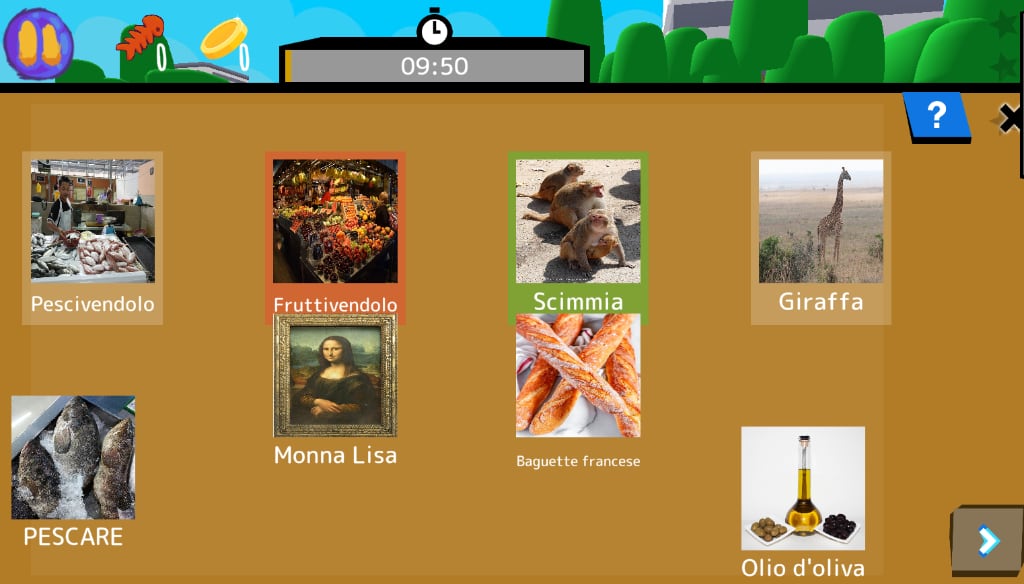 match items by something in common
match items by something in common
Categories:
- Observation: Notice details and patterns in images or scenes.
- Attention: Focus on relevant information and ignore distractions.
Skills:
- Working memory: Hold small amounts of information for a short time.
- Spatial recall: Remember where things are in space.
- Pairing & association: Match items that belong together.
- Selective attention: Focus on the target and ignore distractions.
goal: couple the pairs of cards, by similitude, logic, relationship, category
gameplay: Drag and drop the items to be "paired"
controls: drag with the finger or the mouse
input Variables:
- How many items (from 2 to 7)
- a list of coupled images
Credits: - Stefano Cecere (Italy)
Memory¶
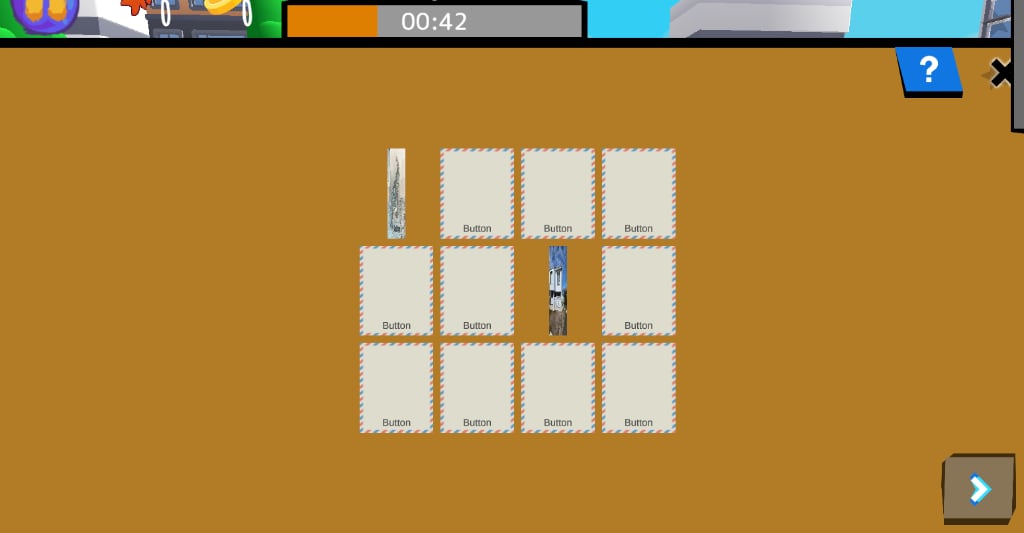 the classic memory game
the classic memory game
Categories:
- Memory: Hold and update information to use it a moment later.
- Observation: Notice details and patterns in images or scenes.
Skills:
- Working memory: Hold small amounts of information for a short time.
- Spatial recall: Remember where things are in space.
- Pairing & association: Match items that belong together.
- Selective attention: Focus on the target and ignore distractions.
goal: select all the couples of identical images gameplay: you are given a set of covered images. you click two images to uncover them if they are identical the stay front side. you win when you find them all input variables: a set of images
Credits: - Stefano Cecere (Italy)
Count the money¶
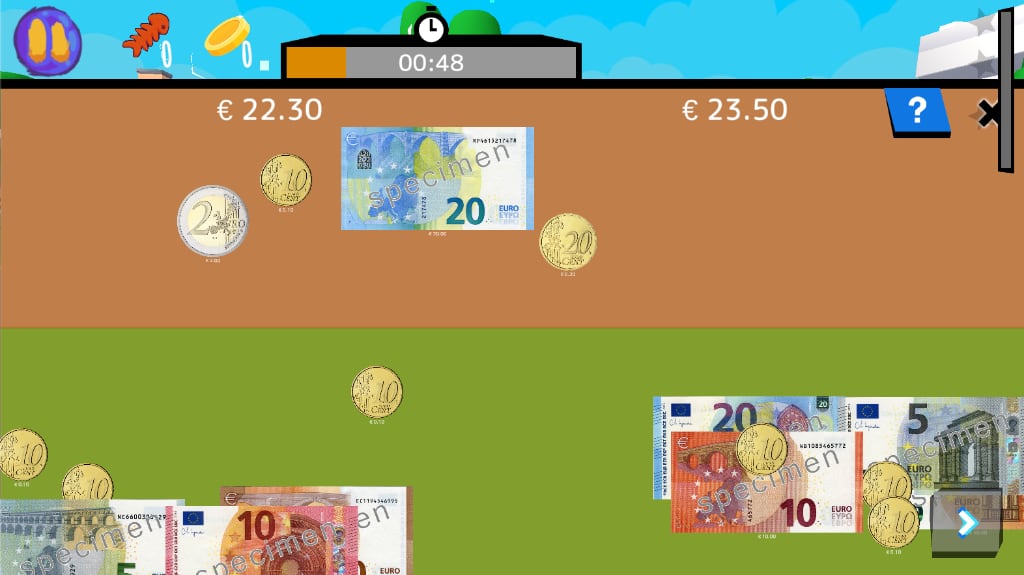 the classic memory game
the classic memory game
Categories:
- Numeracy: Use numbers and money in everyday contexts.
- Problem Solving: Analyze situations and find effective solutions.
- Math: Practice formal mathematics and structured problem solving.
Skills:
- Currency calculation: Add and combine coins or notes to reach a target.
- Numerical calculation: Add
- Proportional reasoning: Compare ratios and scale amounts correctly.
- Planning: Choose steps and order to reach a goal.
- Selective attention: Focus on the target and ignore distractions.
goal: Examine the coins and banknotes given and select the ones that add up to the amount of money requested. gameplay: the player is tasked with analysing and understanding the value of a sum of coins. The minigame uses a combination of both metal coins and banknotes, so that it may be adapted to the specific currency of many different countries.
Credits: - Valeria Passarella (Italy) - Stefano Cecere (Italy)
Order¶
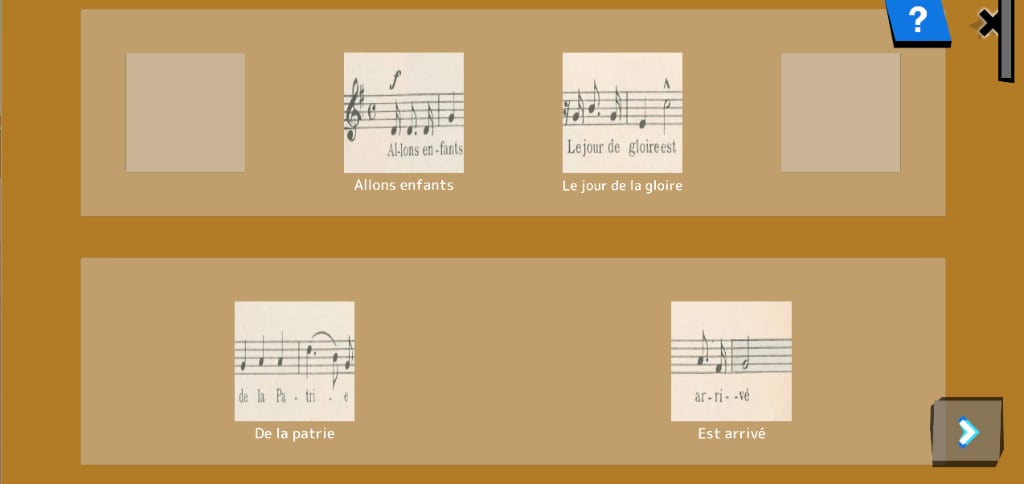 put elements in the right order
put elements in the right order
Categories:
- Sequencing: Arrange elements in logical or chronological order.
- Observation: Notice details and patterns in images or scenes.
Skills:
- Order & sequencing: Arrange steps or events in the right order.
- Pairing & association: Match items that belong together.
- Selective attention: Focus on the target and ignore distractions.
- Visual discrimination: Spot small differences and match similar images.
- Planning: Choose steps and order to reach a goal.
goal: Find the right sequence of items and drag them in place gameplay: Drag and drop the items in the correct order. controls: drag with the finger or the mouse
Input Variables: - How many items (from 3 to 7) - Items images
Credits: - Lorenzo Castrovilli (Italy) - Stefano Cecere (Italy)
Piano¶
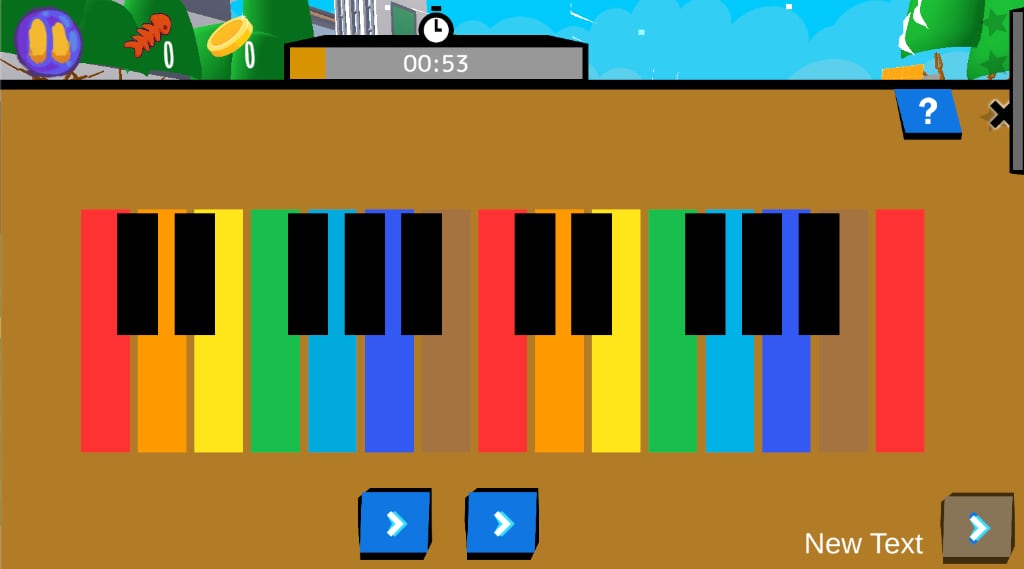 sequential memory and repetition. also musical
sequential memory and repetition. also musical
Categories:
- Music: Perceive and produce sounds
- Memory: Hold and update information to use it a moment later.
- Attention: Focus on relevant information and ignore distractions.
Skills:
- Rhythm sense: Keep a beat and reproduce rhythmic patterns.
- Auditory memory: Remember and repeat sounds or spoken sequences.
- Sequencing: Remember the order of items or events.
- Selective attention: Focus on the target and ignore distractions.
- Fine motor control: Make precise small movements with hands and fingers.
goal: Play a given melody (by sounds / colors). it can work as a memory game also! gameplay: We hear a notes sequence and have to repeat it. We press play and hear the sequence and highlight notes. When we press keys, we “play” a sequence. If done properly: we win.
Input Variables: - Notes sequence - Scoresheet texture
Credits: - Stefano Cecere (Italy)